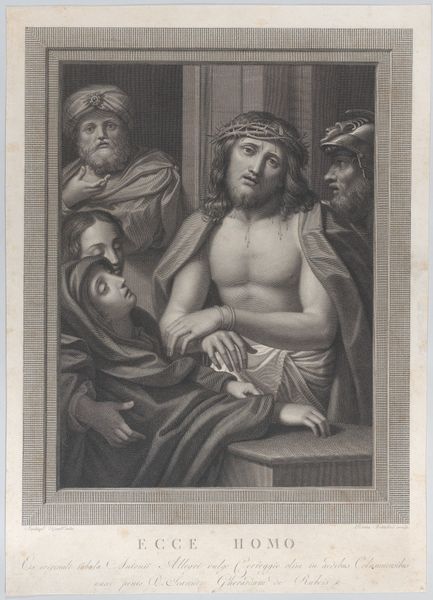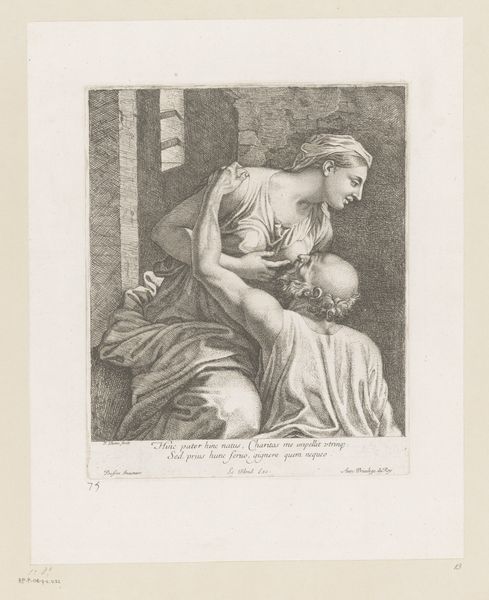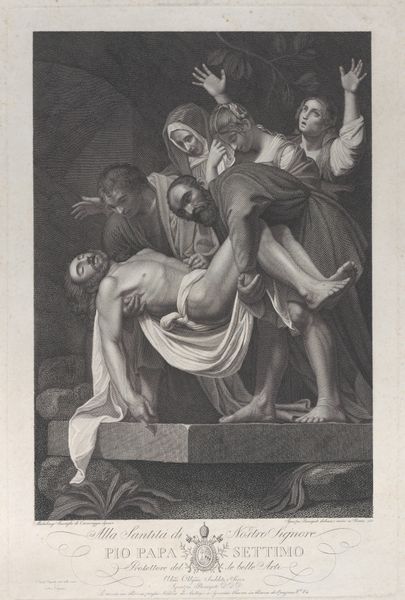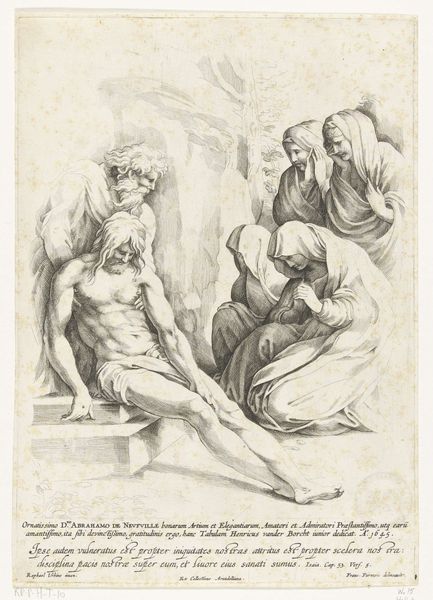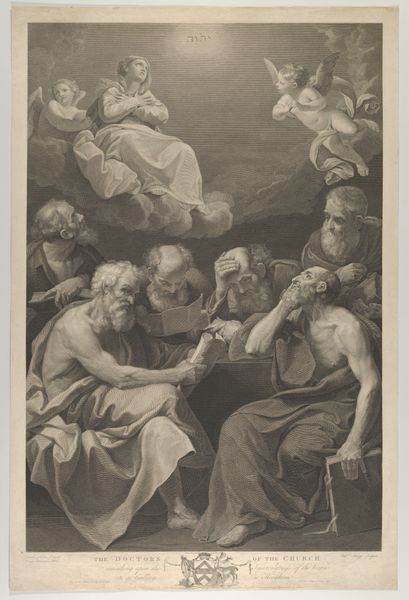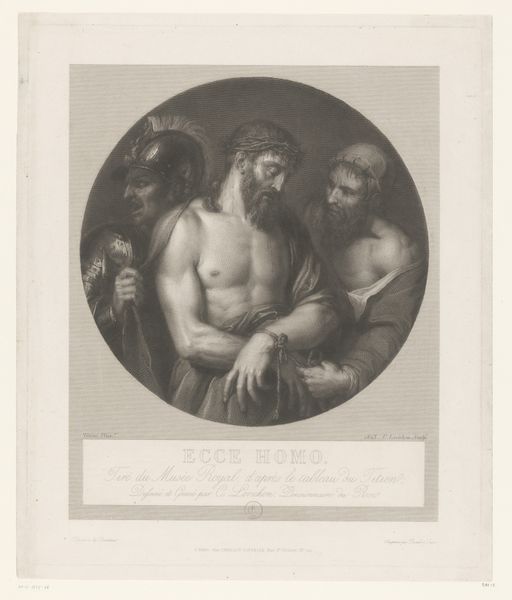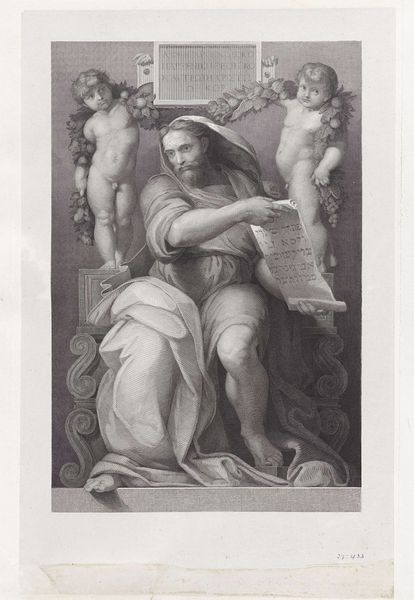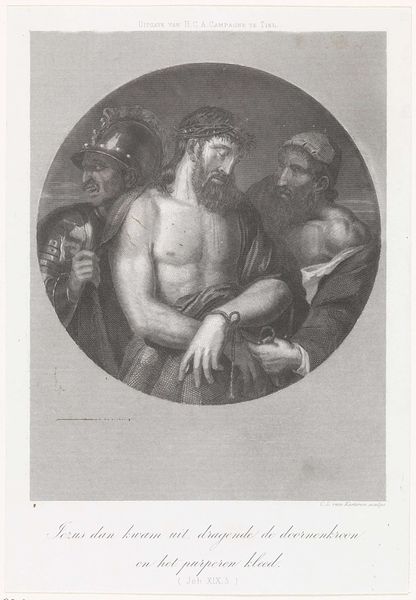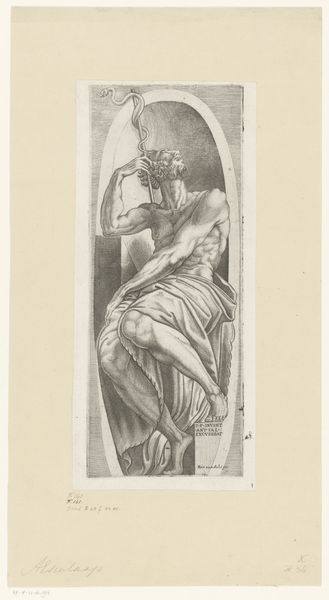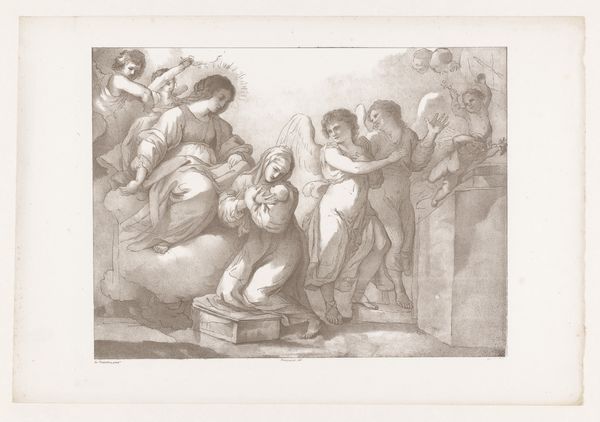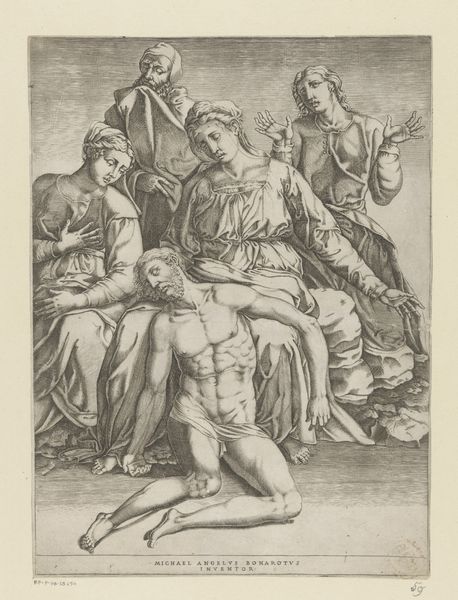
Ecce Homo, with Pontius Pilate behind him at left, the Virgin fainting at lower left, and a soldier at right 1850
0:00
0:00
drawing, print, engraving
#
drawing
#
narrative-art
# print
#
history-painting
#
engraving
#
realism
Dimensions: Plate: 19 1/2 × 15 3/16 in. (49.6 × 38.6 cm) Sheet: 21 3/8 in. × 16 in. (54.3 × 40.6 cm)
Copyright: Public Domain
Editor: We're looking at "Ecce Homo," an 1850 engraving by George T. Doo. The stark realism and dramatic staging create an atmosphere of intense suffering and judgment. How do you interpret the power dynamics represented in this scene? Curator: This engraving, based on an earlier painting, speaks volumes about the visual construction of power and victimhood. Consider the title: "Behold the Man." Who is speaking? Who is meant to behold, and for what purpose? Is this an act of cruelty, of judgment, or a cynical display of power? Editor: That's a chilling perspective. The fainting Virgin and the looming figures of Pilate and the soldier highlight the contrast between power and helplessness. Curator: Exactly. And consider how that helplessness is gendered. The swooning female figure becomes a visual trope reinforcing passivity in the face of male authority. But how might we, as viewers, resist such a reading? Where do you see potential for agency or resistance, even within this seemingly rigid framework? Editor: Perhaps in Christ's gaze? There's a quiet defiance in his eyes, despite the crown of thorns. And in the enduring legacy of this image; how many times has this scene of oppression been reproduced and reinterpreted, almost as a form of cultural resistance? Curator: Precisely! The power of the image lies not just in its depiction of historical suffering, but in its ongoing potential to provoke questions about justice, power, and representation. The piece is from 1850; think about its connections with the debates around abolition and emancipation at that time. Editor: It’s incredible how much richer this work becomes when viewed through the lens of social and political discourse. It pushes me to examine these classic scenes critically, challenging surface interpretations and expanding to a cultural critique. Curator: And that's exactly what makes art history such a valuable tool for understanding our world. We are not just looking at the past; we are engaging in a conversation with it.
Comments
No comments
Be the first to comment and join the conversation on the ultimate creative platform.
